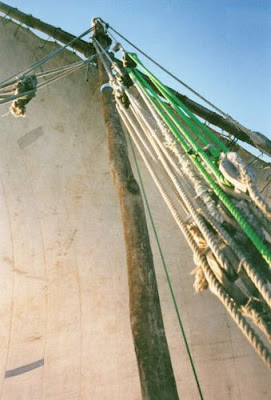 Ganges Bhur
Ganges Bhur
 Thames barge Blackwater Essex
Thames barge Blackwater Essex
 Koga in The English Channel
Koga in The English Channel
 Fishing boat, Porquerelles
Fishing boat, Porquerelles
 Loading caique
Loading caique
 sail of dhow
sail of dhow
 helming dhow
helming dhow

 Jahazi dhow hold
Jahazi dhow hold
 pasanger dhow Zanzibar
pasanger dhow Zanzibar
 Zanzibar fishing dhow
Zanzibar fishing dhow
 Zanzibar harbour
Zanzibar harbour
 Sail Ship KOGA
Sail Ship KOGA

 Zanzibar Jahazi
Zanzibar Jahazi
 cargo freighter sail boat dhow Perahu Boutre sloop
cargo freighter sail boat dhow Perahu Boutre sloop
 Lambo Perahu in Bira
Lambo Perahu in Bira
 Lambo Perahu Makassar
Lambo Perahu Makassar
 Haitian cargo vessel in Nassau harbour
Haitian cargo vessel in Nassau harbour
 Haitian fraighter
Haitian fraighter
 Haitian sloop
Haitian sloop
 Haitian sloop
Haitian sloop

 Haitian sloop
Haitian sloop
 Haitian sloop full loaded deck
Haitian sloop full loaded deck
 Haitian sloop in Nassau
Haitian sloop in Nassau
 working sloops from Haiti
working sloops from Haiti
all photos and captions courtesy Paul Frankowski
(I have made some slight edits to the captions)
I was contacted by a young sailor, Paul Frankowski, who urged me to write about Hans Klaar and his rather amazing endeavors. I have been aware of Hans Klaar for some time and there is some info on him and his proa accessible through the
Arpex site. There had been, until recently, far more info on Hans but it has seemingly been removed. I love Hans' story, but I was arrested by a footnote to Paul's email , giving me a link to his
Flickr postings. With further correspondence more of Paul's own story emerged. Paul has been tracking working sail in out of the way places and has some meaty evidence of his research. He's a fairly interesting specimen himself, to boot.
Born in Poland, he immigrated to the UK in 1995 after learning to sail on the Baltic in what he terms "the tough school sailing world of a communist regime," where he was denied entry to foreign ports. He's made his way by working as a builder and was inspired by
Clifford Hawkins' The Dhow, and the book and film of
The Last Sailor, by Neil Hollander and Harald Mertes to document indigenous working sail, or as he puts it, cargo ships.
After a visit to the Mediterranean, where he experienced the local ciaques, he sailed to Tanzania and Zanzibar where he managed to sail on a Jahazi, an indigenous dhow, and reports "it was like to be back in Vasco da Gamma times (with) no radio, no life preservers and so on." Next he went to Indonesia where he sailed a Lambo Perahus, a type of Günter sloop. Lately he's been to the Bahamas to document the Haitian sloop - certainly a lot of adventures. There is also a photo of an Indian dhow on the Ganges, so I would assume... ?
Paul has also published two articles about these craft in Polish sailing magazines. His next research landfalls would be to Brazil to sail Saveiros and to Madagascar where there are still plenty of cargo schooners, Gaolettes and dhows. I am hoping for the best of luck for Paul and the book he's writing on this subject.


















































































